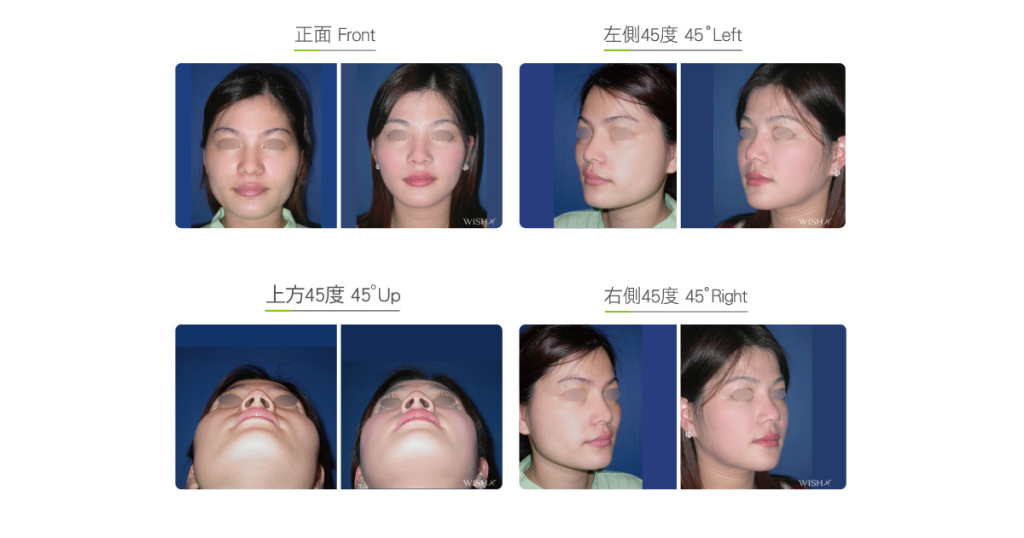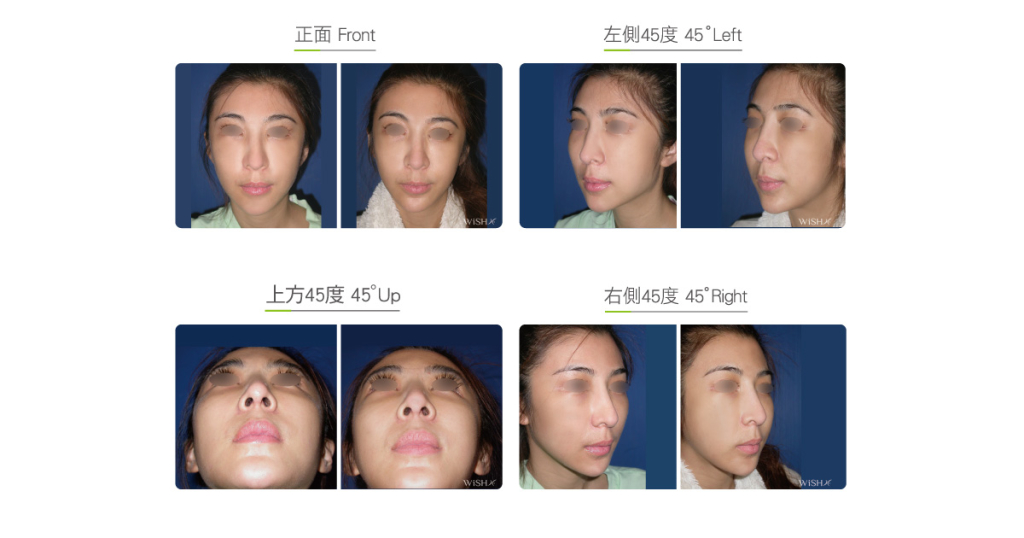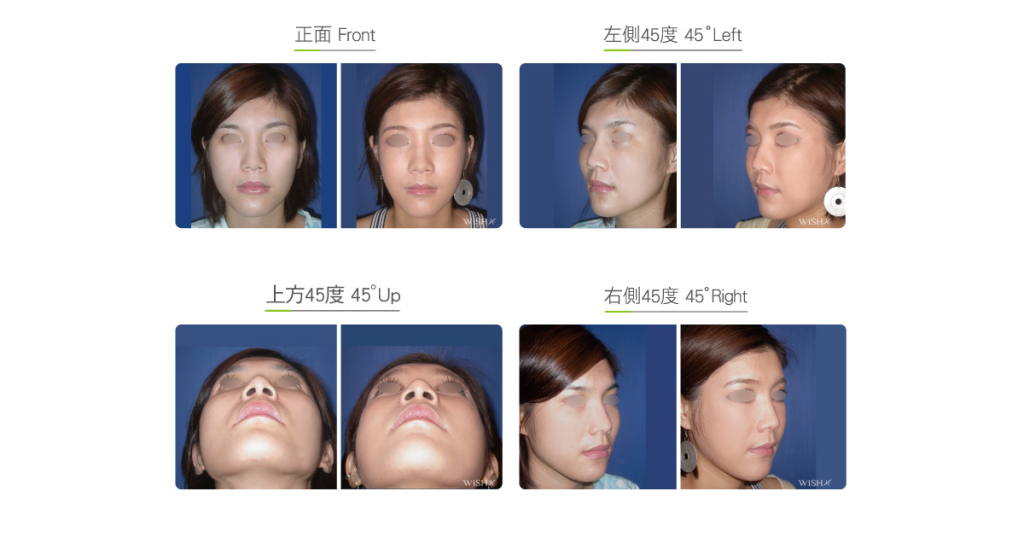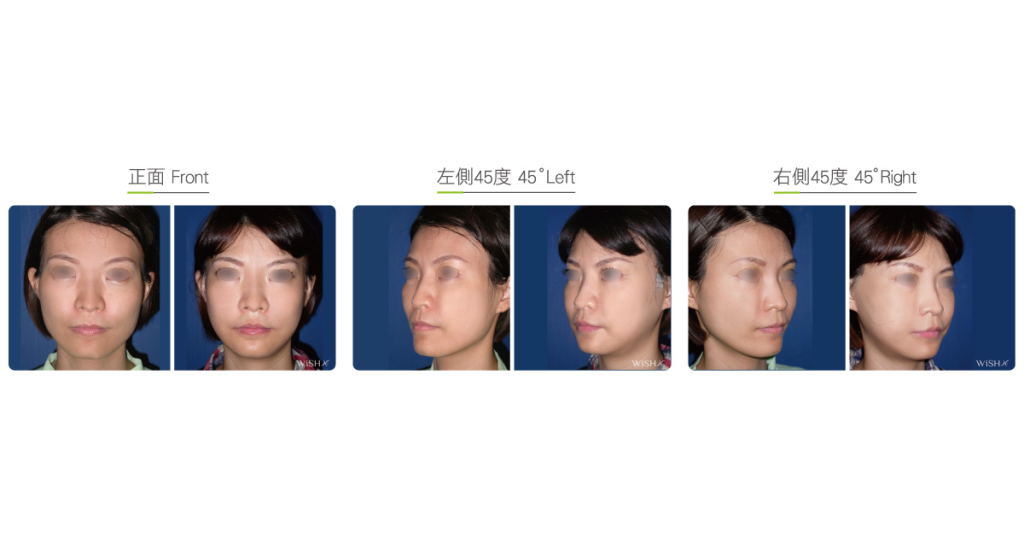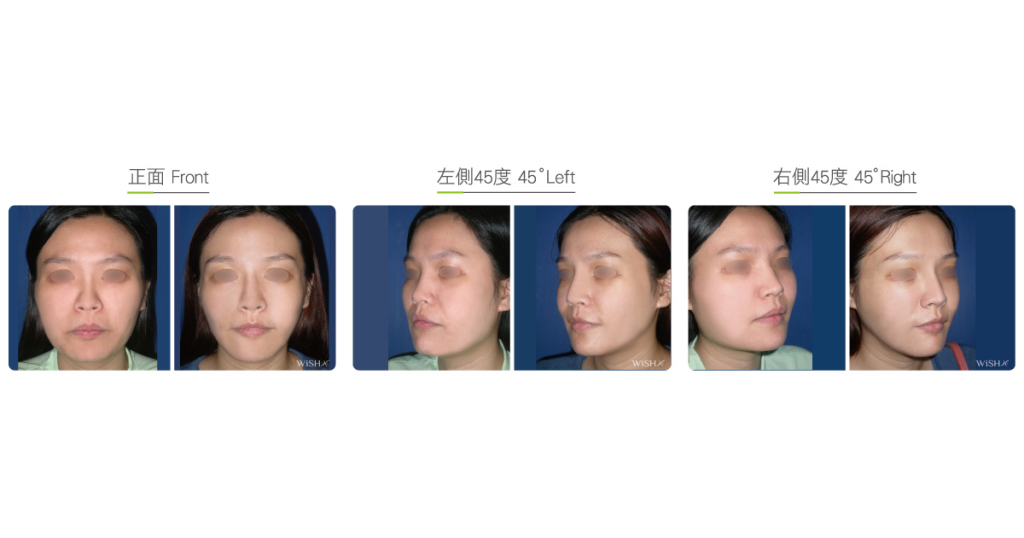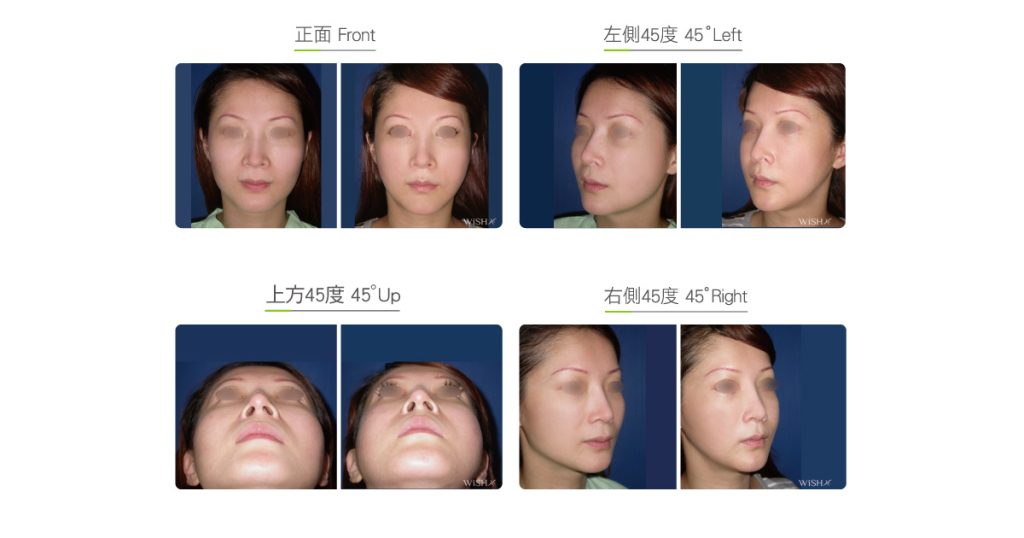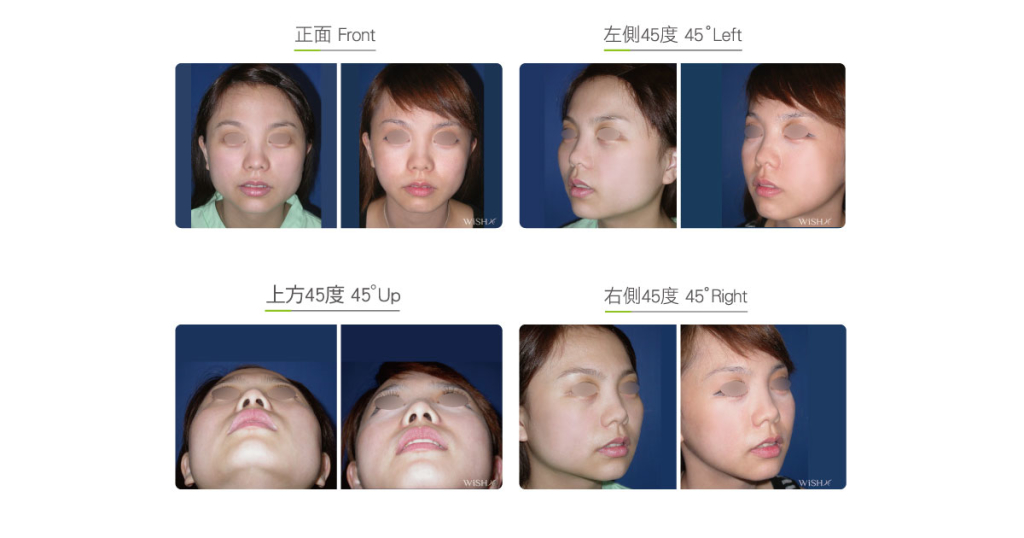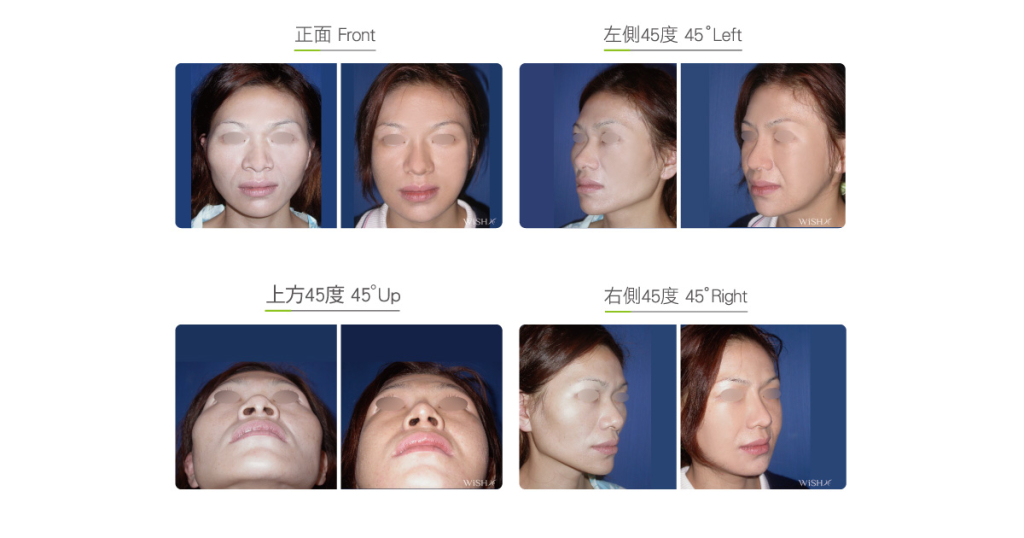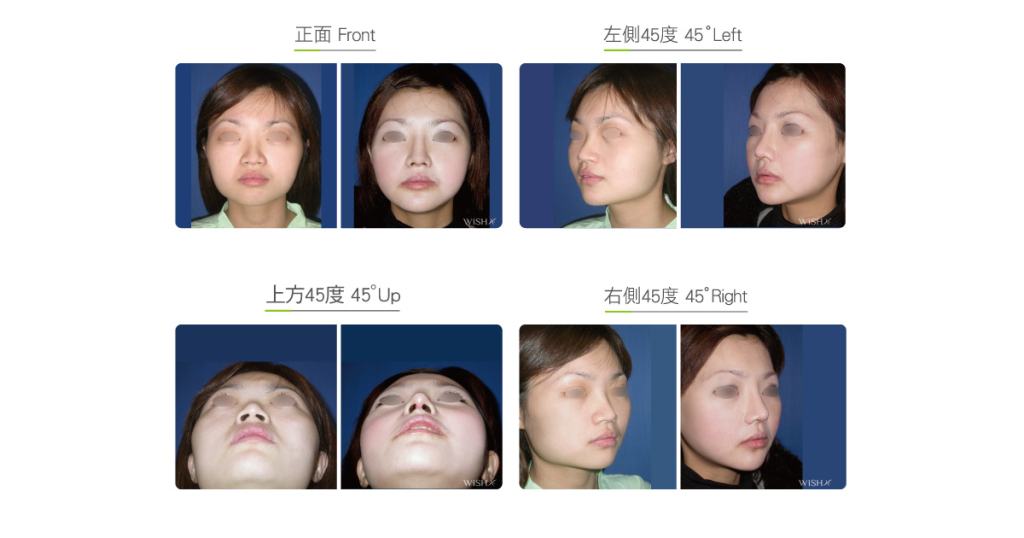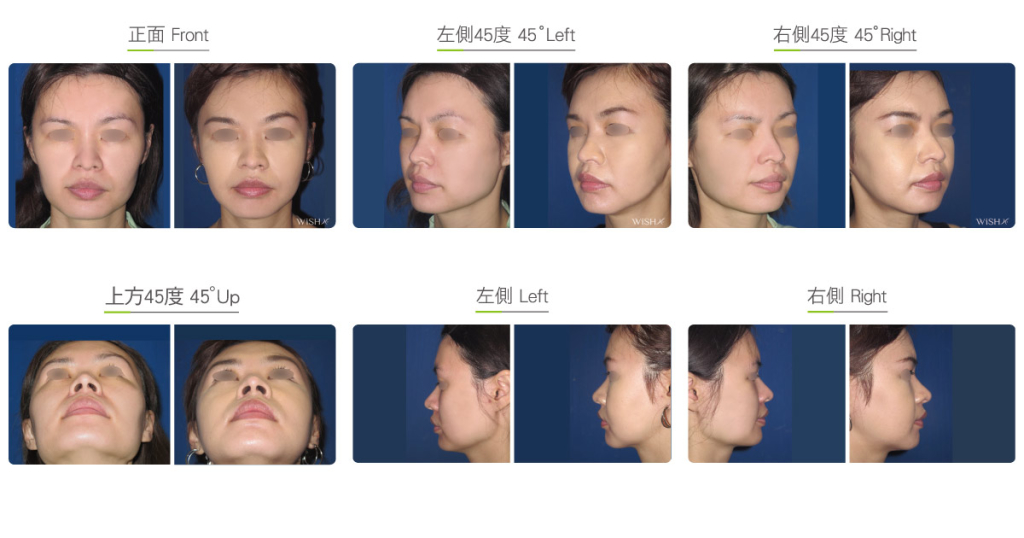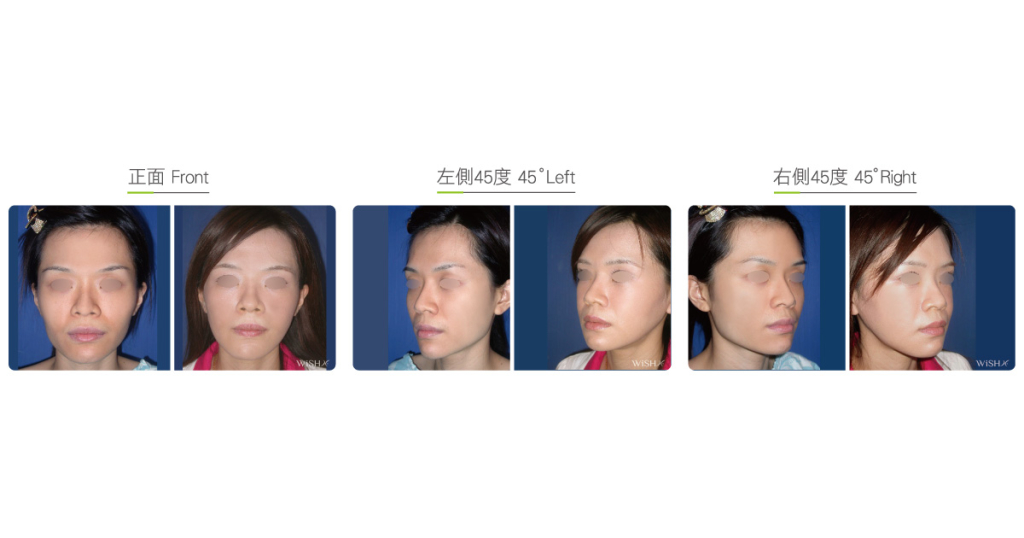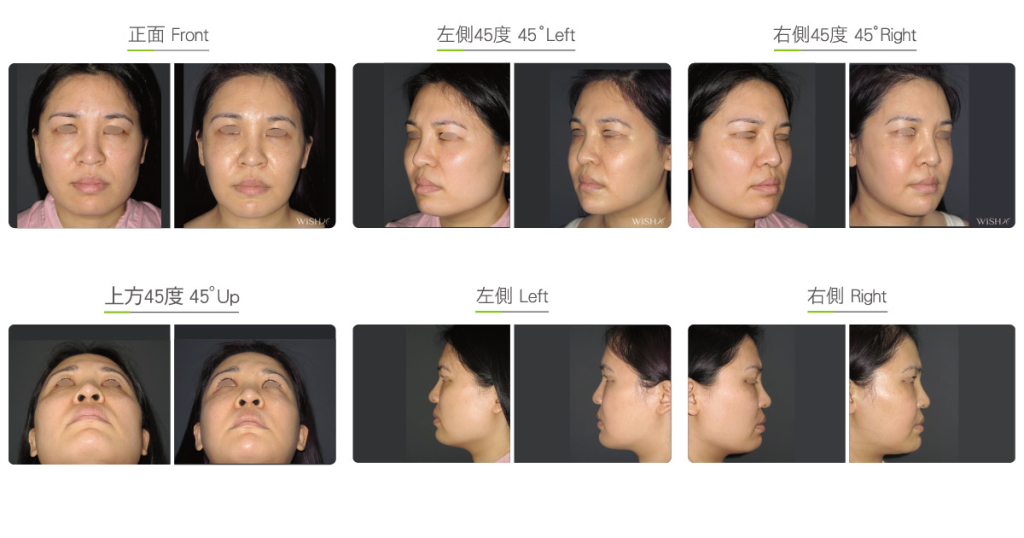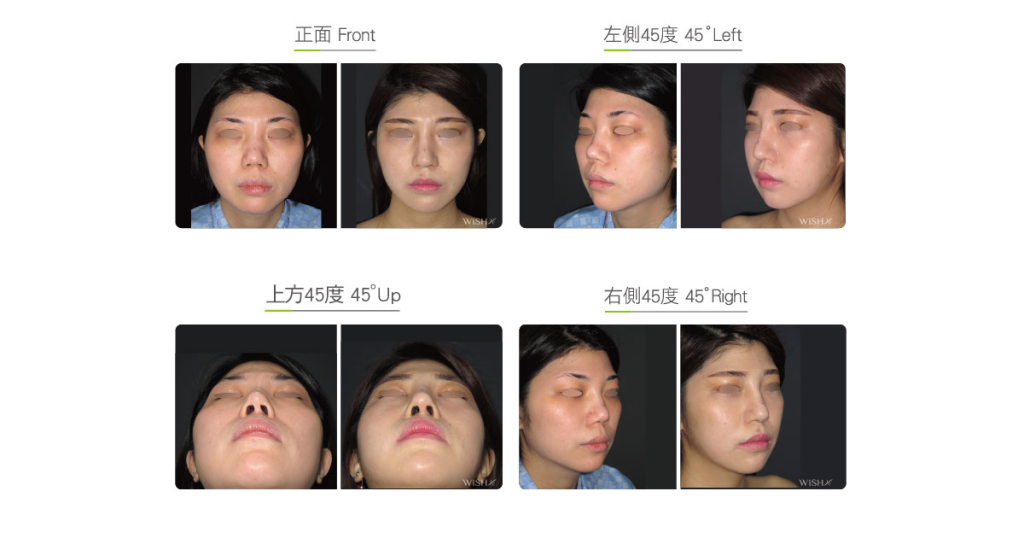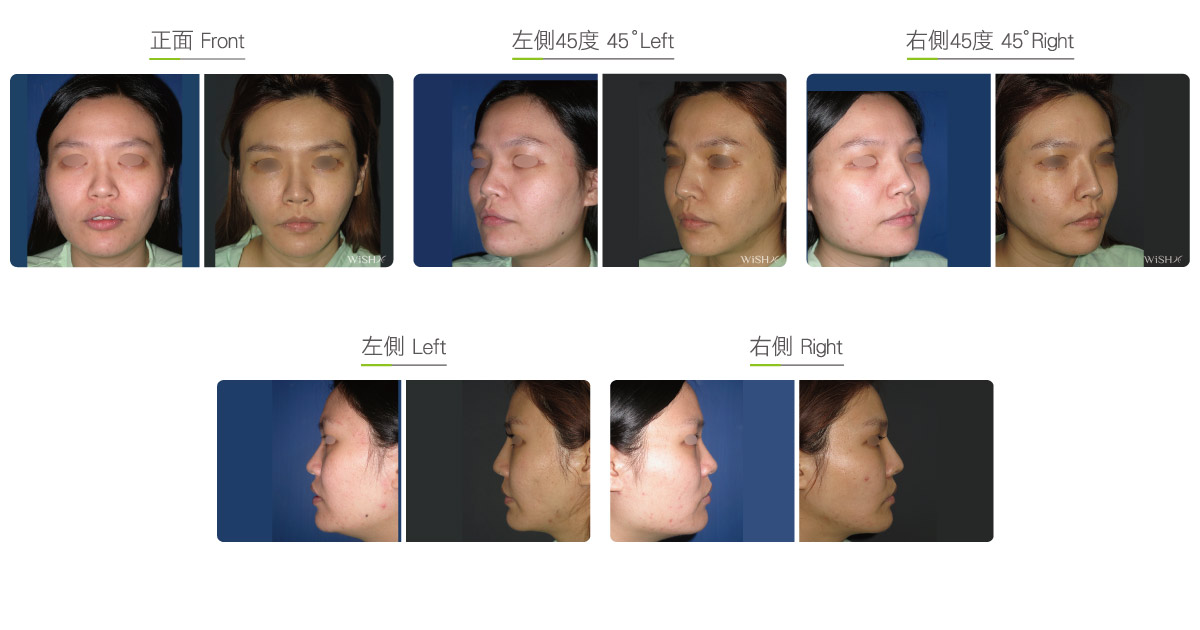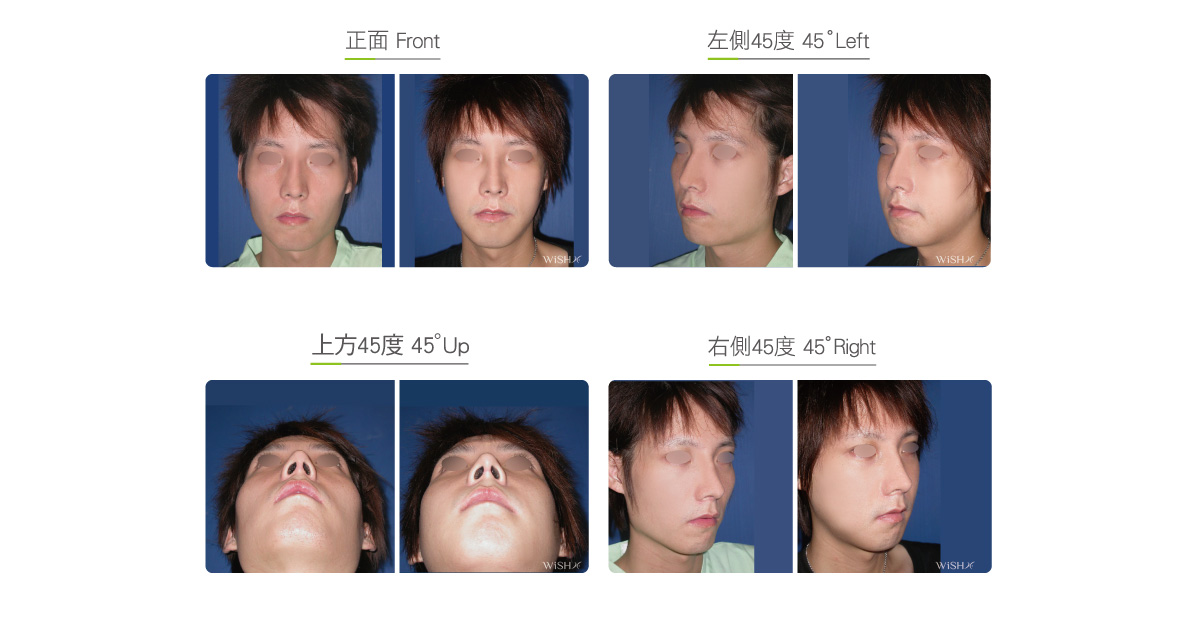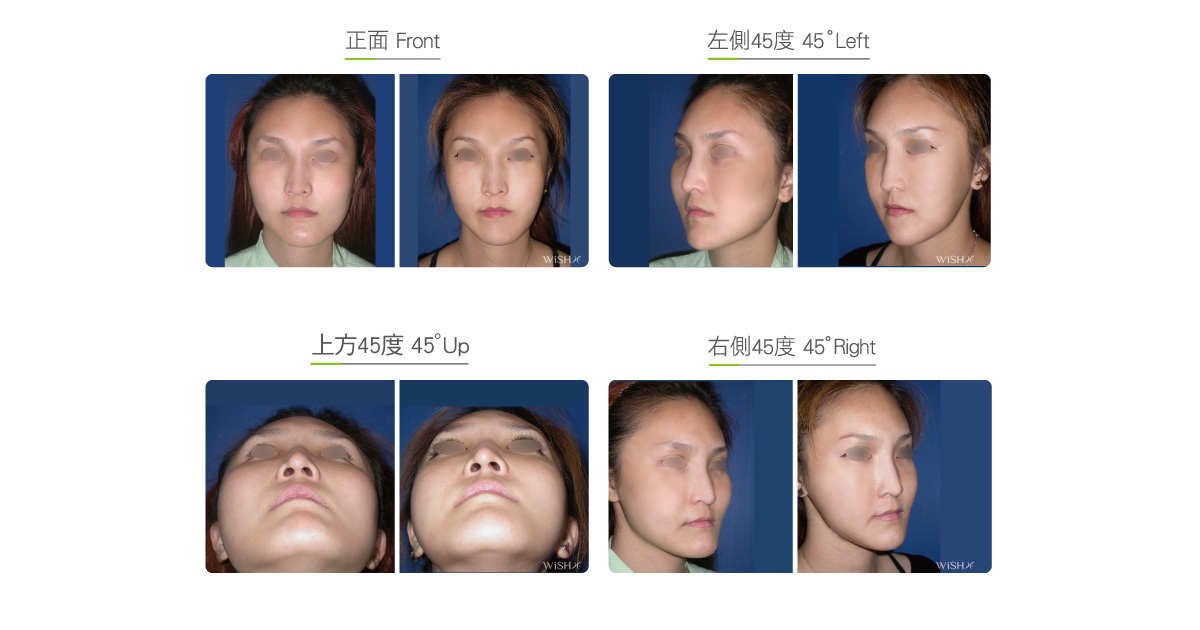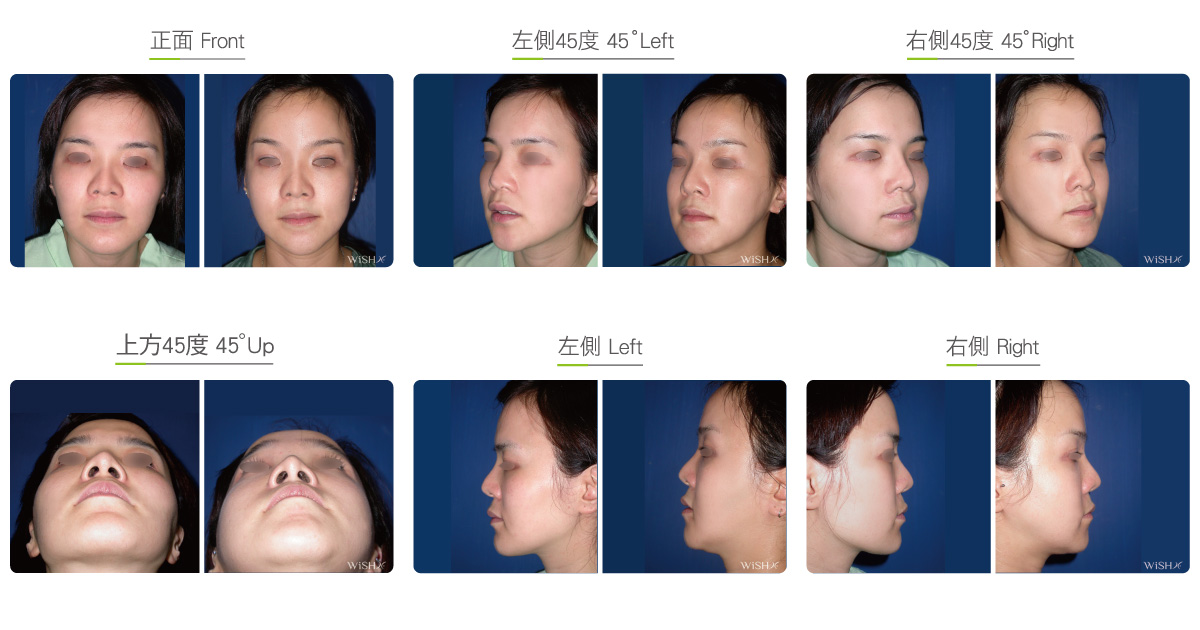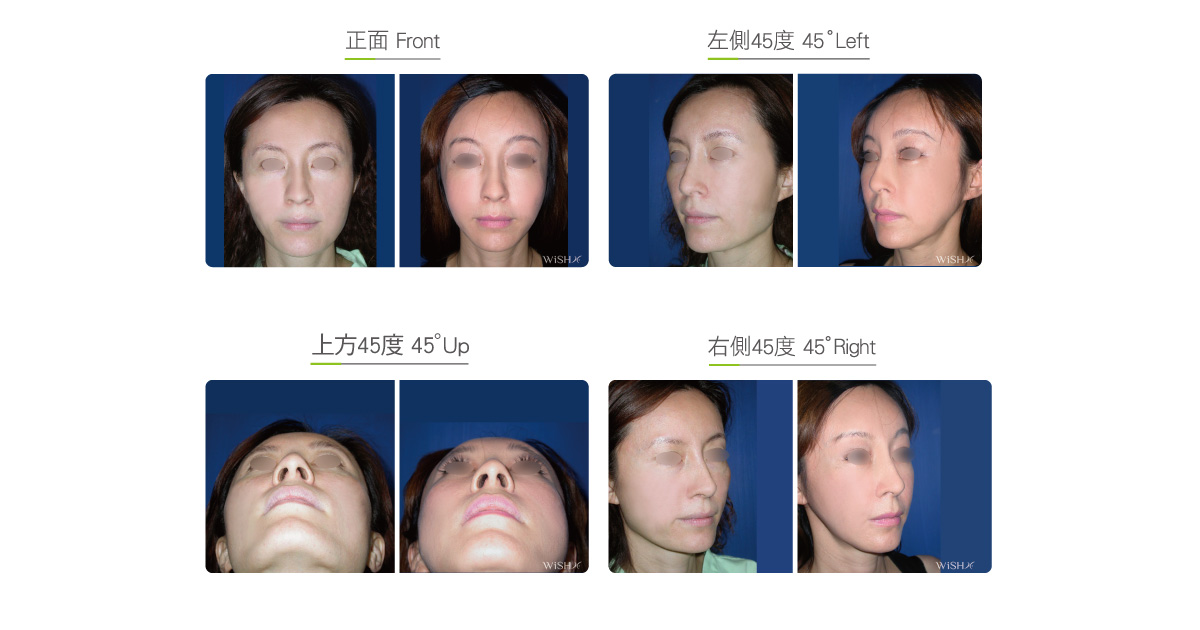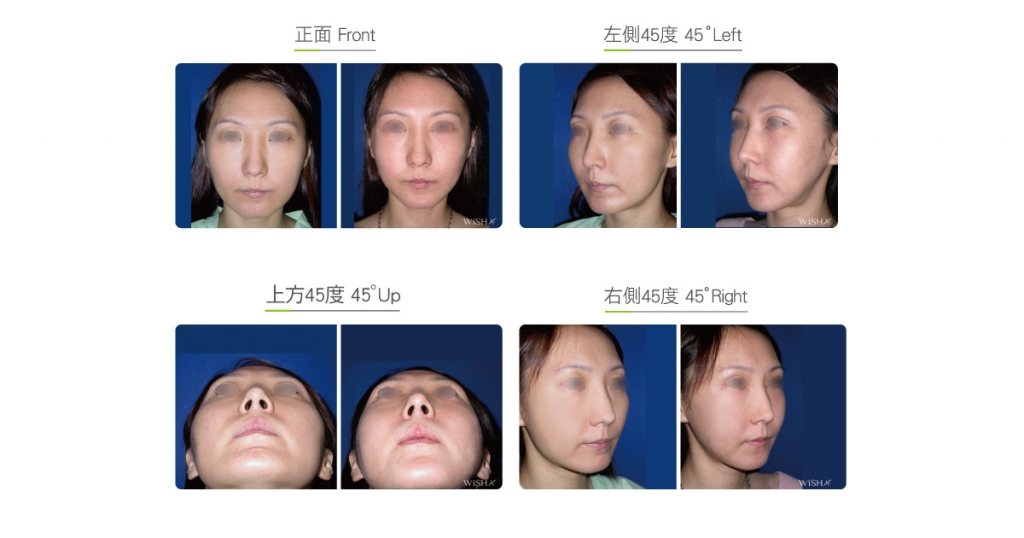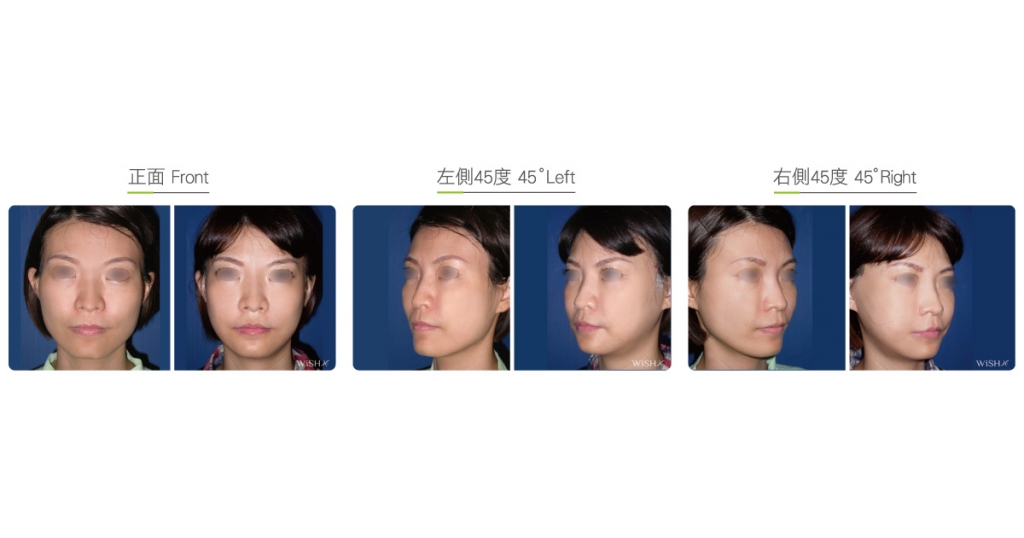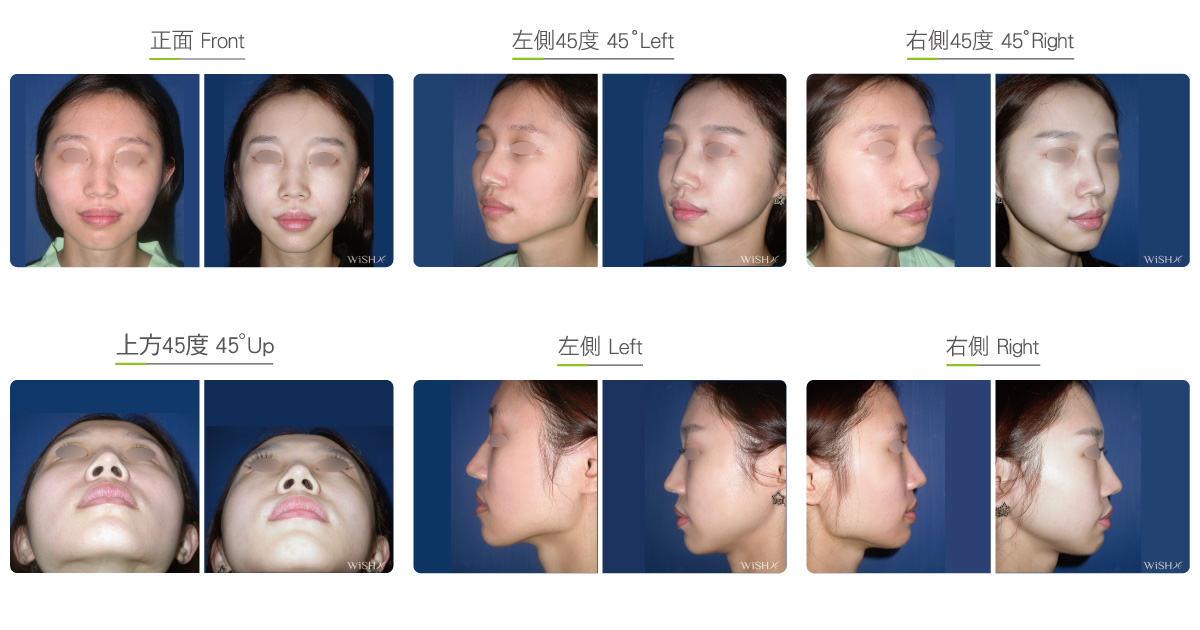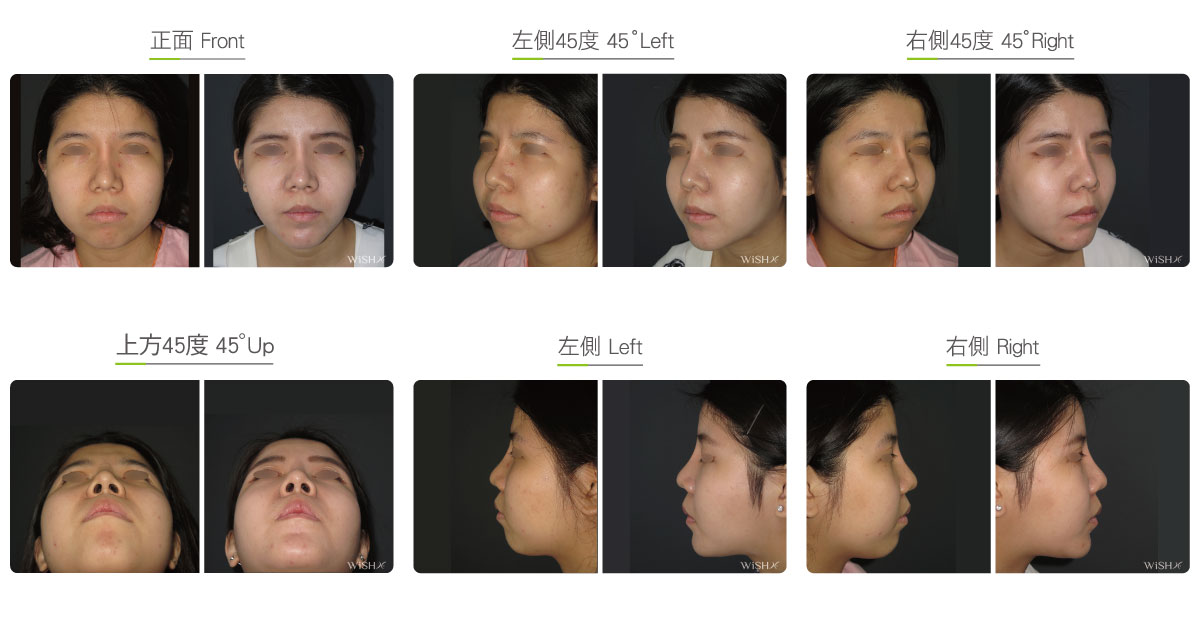Cheekbone Combined Jaw Reduction (Square-Shaped Face Correction)
Medically, there is no consistent standard to define the facial size or shape; however, if the face has the following characteristics, its shape could be regarded as a “typical square” (“home plate” face): the width between the lateral cheekbone is more than the width between the outer margin of the brow ridge and the width of the mandible is the same as or more than that between the cheekbone. Such facial conditions, like obviously outward expansive cheekbones and protrusive mandibles, are mostly caused by hereditary facial bone overdevelopment in the horizontal direction, characterized by contours such as prominent cheekbones with outward protrusion and obviously protrusive mandible angles; in addition, some derived facial characteristics, such as depressed midface (midface hypoplasia), nasolabial groove, temples, and side cheeks, can make patients look old or bony. Some patients choose to receive micro-invasive procedures, such as a filler or fat injection, to fill the depressed parts caused by bone protrusion. However, simply using autologous fat or hyaluronic acid injection to correct the depressed facial appearances caused by bony protrusion is more prone to induce a round or pancake face in most patients. This cannot even create any facial esthetic sense; rather, it makes the final results totally opposite to a slim or small face. Hence, any non-surgical procedure is not the option to improve the real facial bone problems. Accordingly, the prime and permanent solution for a square-shaped face should be bone cutting on both the zygomatic bone and mandible, which will effectively reduce the face width and soften the facial contour and angle in the side view. It will also improve the secondary problems of soft tissues such as depressed cheeks or temples. With this surgery, patients can completely and permanently relieve the sufferings of undesirable facial contours.
This procedure integrates zygomatic bone and mandible bone reduction. Dr. Chuang will perform zygomatic bone reduction first and then perform mandible reduction accordingly at the same time; the details of each step are the same as those for the individual procedure of bone reduction. Dr. Chuang to pay attention to the facial ratio and harmony when simultaneously changing the contour of both the mid and low face. They need to focus on adjusting the relative position between the zygomatic bone and mandible and reduce the trauma to the soft tissues as much as possible in this extensive operation. In particular, because the duration of surgery and general anesthesia is quite long and the postoperative recovery must be slow, the patients should be admitted to the clinic for one day to observe the post-operative conditions. Furthermore, Dr. Chuang will place an intraoral drainage tube to avoid potential complications such as hematoma or delayed bleeding. This tube will be removed on the day before the patient is discharged.
Surgical conditions
Duration
- Type of anesthesia: General anesthesia
- Type of incision: Intraoral upper gum (2 cm), within the preauricular hairline (1 cm), and intraoral lower gum (3–5 cm)
- Recovery: 10–14 days
- Removal of stitches: 7 days
General instructions
No food and water on the day of surgery
- Only a soft or fluid diet should be consumed for 2 weeks postoperatively.
- Extensive opening of mouth or consumption of very hard food and fruits should be avoided for 1 month postoperatively.
- Force on the face or squeezing of the face should be avoided for 3 months postoperatively.
- Over-chewing should be avoided to prevent hyperosteogeny or bone regrowth.
Ideal candidates
- Those who have severe square-shaped faces with the cheekbone and mandible protrusions.
- Those with depressed upper (temples) and lower (cheeks) faces caused by bony protrusions.
- Those with typical “pancake faces,” square-shaped faces, or round faces.
- Those who want perfect “small V”-shaped” or pointed faces.
- Those whose facial contours are acute due to the cheekbone and mandible protrusions.
- Those who are unwilling to receive a filler or fat injection to improve the undesirable facial contours.
Potential complications
- Temporary or permanent chin numbness
- Asymmetric mouth movement
- Hematoma
- Skin laxity
- Over- or under-correction
Surgical advantages
-
The surgical result is obvious; can permanently eradicate too wide or square-shaped facial problems.
-
Will reduce the protrusions of the zygomatic bones and mandibles in a one-time surgery to reduce the risks and multiple recoveries in separate surgeries.
-
Will simultaneously improve the soft tissue depressions of temples and side cheeks.
-
Will be combined with other facial plastic surgeries to achieve the perfect face or complete face changing according to the patient’s expectation.
Surgical drawbacks
-
The duration of the whole surgery is long; postoperative swelling is evident; recovery is slow.
-
Facial contour will significantly improve, which results in irreversible changes of bone structures.
-
Will cause more skin loosening or drooping than a single bone reduction procedure.
-
Postoperative diet restriction is temporarily complex.

